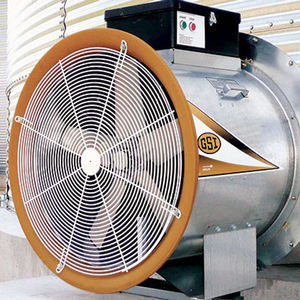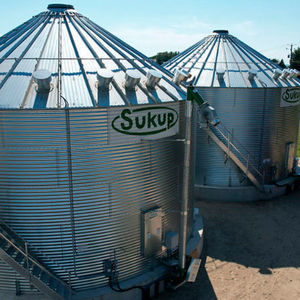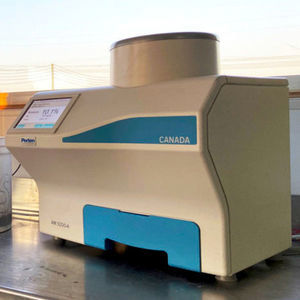
CO2 analyzer for grainssoybeanwater
Add to favorites
Compare this product
fo_shop_gate_exact_title
Characteristics
- Analyzed product
- for grains, water, soybean, CO2
- Measured value
- moisture, temperature
- Other characteristics
- wireless
Description
For early detection of storage problems at low cost, secure your storage with our wireless CO2 monitoring sensors. They help detect a problem in your bin or your warehouse, like water infiltration, the beginnings of mildew, or grain trying to heat up.
Our sensors don't just measure CO2, they also monitor temperature and moisture levels, giving you the critical insights needed to prevent crop and hay damages.
The benefits:
Early detection of heated grain, mold and insects.
4 times faster than cabled sensors
20 times more surface cover than cabled sensors
SMS early warning system in case of problem
Common storage problems:
Grains sticking to the walls:
Mold problems on the walls often appear in soybean bins. Grain that is slightly too moist, combined with cold autumn days and a lack of ventilation at harvest, are all causes that favor condensation on the walls.
Heated grain and bin core:
Even after drying, grain stored in a bin remains at risk of heating up. Broken grain accumulated in the center of the bin, compacted during filling, complicates ventilation. When temperatures are warm (20°C) at harvest, grain leaving the dryer can reach 25-28°C. At this temperature, the grain can continue to transpire, which can quickly cause thermal runaway and overheating of your grain.
Rooftop condensation:
As your grain cools, the warm, moisture-laden air leaving the grain mass can condense on the roof of your bin, even at 10°C! This condensation can create water droplets. Over time, if these droplets fall on your grain, the top layer of grain will harden and form a crust.
Catalogs
No catalogs are available for this product.
See all of agrilog‘s catalogsExhibitions
Meet this supplier at the following exhibition(s):


*Prices are pre-tax. They exclude delivery charges and customs duties and do not include additional charges for installation or activation options. Prices are indicative only and may vary by country, with changes to the cost of raw materials and exchange rates.





